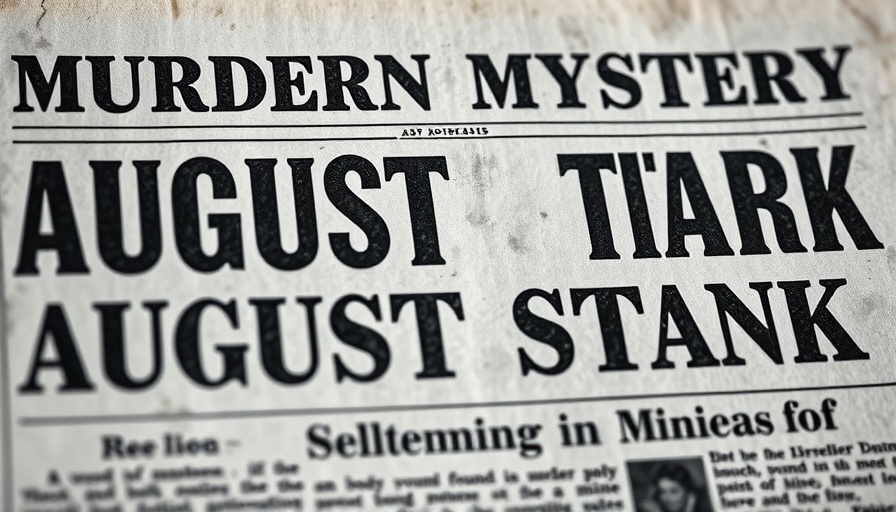
Unearthing a Tragic Mystery: The Murder of August Stark
The chilling tale of August Stark begins with his body, discovered frozen deep within the Casino Coal Mine in Wilton, North Dakota in March 1900. What seemed like a routine accident quickly spiraled into a murder investigation that captured the public’s attention in a way few cases ever had. Stark's demise—a result of a violent act—sparked a quest for justice that hinged upon the peculiar sequence of betrayals and confessions among those closest to him.
A Day of Discovery: How the Investigation Unfolded
On a cold day, County Coroner White arrived at the scene, where Stark’s corpse lay unceremoniously frozen and displaying clear signs of foul play. A gash across his face and a bullet lodged in his skull painted a grim picture of his final moments. Stark, a worker at the mine, had money and was thus suspected to have been the victim of robbery and murder. Key pieces of evidence including marks around his ankles suggested he had been dragged down the mine shaft, raising suspicions against the mine’s owners, James and Ira Jenkins.
Whispers of Guilt: The Jenkins Accusation
The investigation took a dramatic turn when the Jenkins, initially proclaiming their innocence, began to unravel under pressure. In separate cells, the father and son accused each other, with James claiming Ira had confessed to killing Stark in their home. This confession was complemented by physical evidence found in their house, including bloodstained carpet, which indicated a violent incident had taken place there.
The Role of a Note and a Shocking Turn
What ultimately sealed the fate of the Jenkins was an unexpected discovery: a note found in Stark’s pocket. Remarkably, this note purportedly contained Stark’s own admissions, complicating the narrative further. As the trial progressed, it became a battle of wits between conflicting testimonies and the physical evidence presented in court. In a dramatic climax, the truth about Stark’s death revealed deeper layers of human frailty and the devastating consequences of desperation.
Legacy of the Case: Implications and Lessons Learned
The murder case of August Stark left a profound mark on North Dakota’s legal history, prompting discussions about justice, accountability, and the weight of evidence. After a highly publicized trial, the case raised questions about the reliability of confessions and the impact of familial relationships when entangled in crime. Eventually leading to one of the state’s few executions, the case is a somber reminder of how tangled motives and emotional ties can escalate into tragedy.
Reflections: Why Do Such Cases Captivate Us?
Murder mysteries like Stark’s resonate deeply with society; they highlight the fragility of human life and the complexity of relationships. In delving into such stories, we not only engage with the grim realities of human nature but also grapple with our own understanding of morality and justice, making it crucial that we keep these discussions alive. Cases that astonish us with plots of betrayal and death serve to remind us of the need for vigilance and compassion in our communities.
Ultimately, as we reflect on historical crimes like that of August Stark, we foster a greater understanding of not only the past but the effects these cases have on our legal system today. They compel us to examine our own responses to crime and justice, encouraging vigilant advocacy for fairness and truth.
 Add Row
Add Row  Add
Add 




Write A Comment